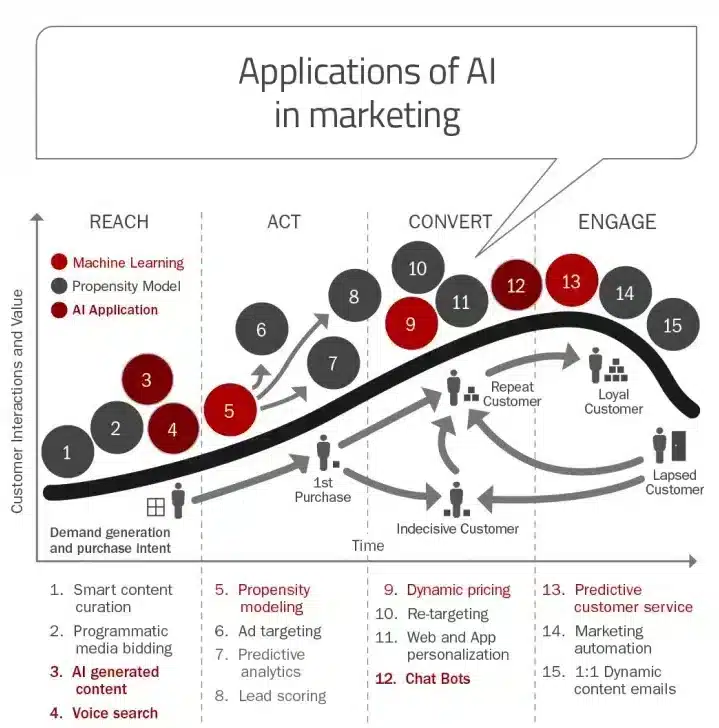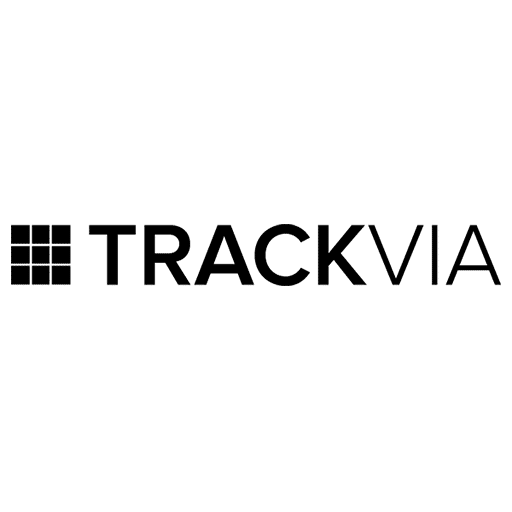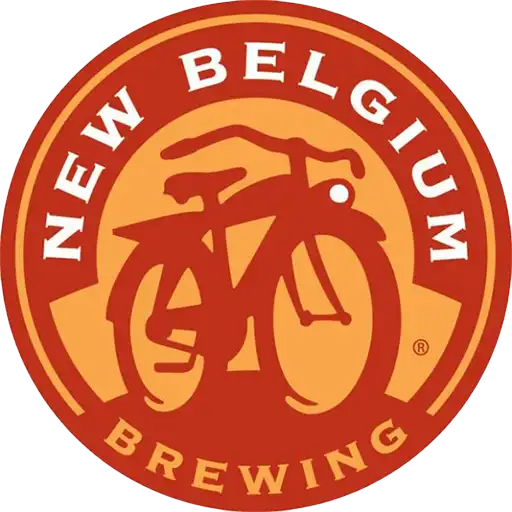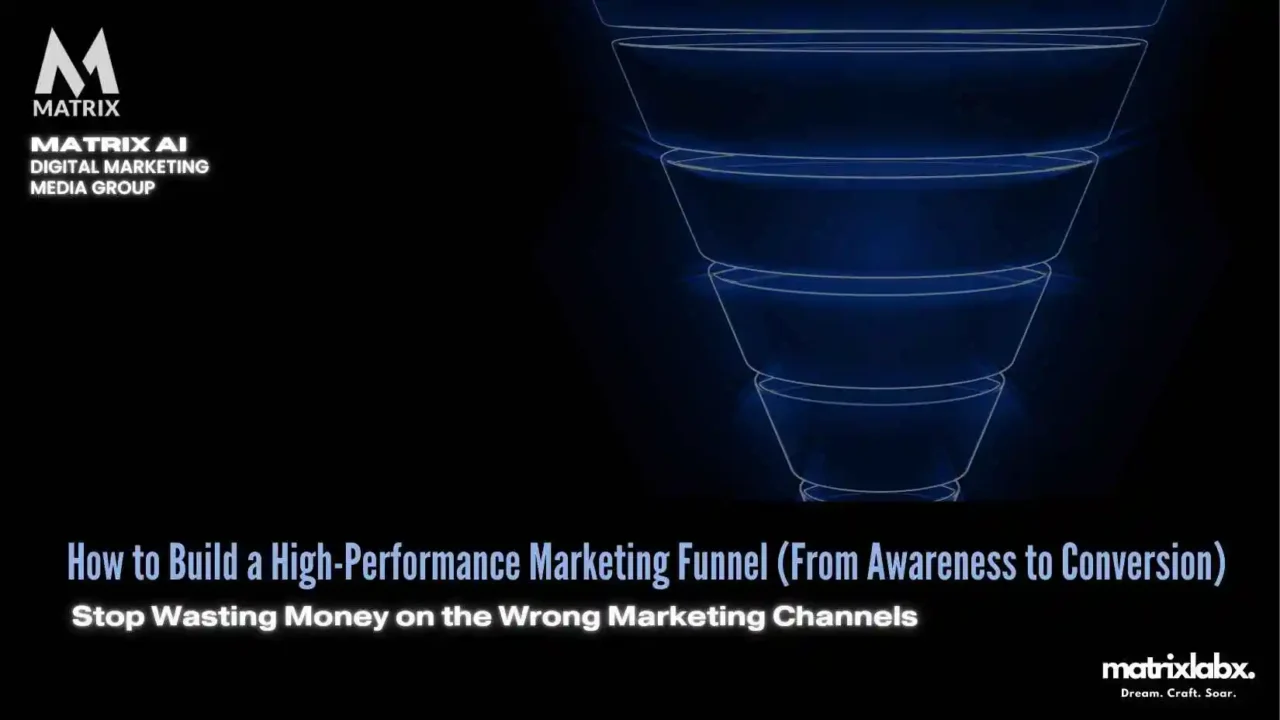How to Build a High-Performance Marketing Funnel (From Awareness to Conversion)
Learn How to Build a High-Performance Marketing Funnel (From Awareness to Conversion).
Building an effective marketing funnel is more critical than ever in today’s dynamic digital landscape. A high-performance funnel guides potential customers seamlessly from initial awareness to final conversion, maximizing engagement and revenue.
Without a strategic funnel, even the most compelling marketing campaigns can fall short, leading to lost opportunities and wasted resources.
Marketing managers must be able to construct a well-optimized funnel to achieve business objectives, enhance customer experiences, and generate measurable results.
Whether launching a new product, entering a new market, or simply seeking to improve existing processes, mastering the marketing funnel is a fundamental skill that can significantly enhance performance outcomes. PPC Digital Benchmarks by Industry
Why Marketing Managers Need a High-Performance Funnel
Marketing managers are responsible for transforming prospects into loyal customers. However, the modern buyer’s journey is complex and nonlinear.
To succeed, managers must deliver the right message at the right time and nurture leads through each stage of the customer journey.
A high-performance funnel ensures that each interaction, whether through ads, emails, or social media, strategically moves prospects closer to conversion.
Moreover, it allows managers to analyze performance at each stage, optimize tactics, and allocate budgets more effectively.
Materials and Tools You Need
To build a high-performance marketing funnel, you will need the following:
- Audience Research Tools: Tools like Google Analytics, Facebook Audience Insights, or surveys help you understand your target demographic.
- Content Calendar: Plan your content output across channels to ensure consistent messaging and brand identity.
- Lead Magnets: Offers like ebooks, webinars, or exclusive discounts that encourage users to share their contact information.
- Email Marketing Platform: Services like Mailchimp, MatrixLabX, or ActiveCampaign to automate communication and nurture leads.
- CRM Software: Manage and track customer interactions with Salesforce or Zoho CRM platforms.
- Landing Page Builders: Tools such as Unbounce, Leadpages, or WordPress to create effective landing pages.
Marketing Effectiveness Bottleneck Diagnostic Tool
Identify where in the decision funnel your brand is underperforming.
How to Gather Resources and Prepare
You can source materials by conducting competitor analysis, surveying your current audience, and utilizing free online analytics tools.
Subscribing to marketing newsletters and participating in industry webinars will keep you updated on best practices.
The Importance of Preparation
Without thorough preparation, your marketing funnel may have gaps that cause your prospects to lose interest or trust.
Organized preparation ensures a seamless customer experience, increasing conversions and long-term brand loyalty.
Moreover, having the right tools in place will make it easier to measure performance and optimize your strategies over time (Pulizzi, 2018).
Understanding the Stages of a Marketing Funnel
Before construction begins, it is essential to grasp the funnel’s core stages:
- Awareness: Potential customers first become aware of your brand or product.
- Interest and Consideration: Prospects seek more information and evaluate their options.
- Decision and Conversion: Prospects act, such as purchasing or signing up.
Each stage requires tailored strategies and content to nurture the lead toward conversion (Kotler, Kartajaya, & Setiawan, 2017).
How to Build a High-Performance Marketing Funnel (From Awareness to Conversion)
Building a high-performance funnel is akin to constructing a modern skyscraper in marketing.
Each stage—from awareness to conversion—acts as a vital floor, requiring careful planning, strong materials, and expert craftsmanship to ensure the entire structure stands tall and attracts attention.
Laying the Foundation: Awareness
As architects begin with a solid foundation, marketers must establish brand awareness. Without it, all subsequent efforts risk collapse.
Here, content marketing, social media campaigns, and targeted advertising lay the groundwork by introducing the brand to potential customers.
Building the Structure: Consideration
Once the foundation is in place, the next floors—consideration and engagement—are constructed.
This phase involves nurturing leads through email marketing, webinars, case studies, and product demonstrations.
Like scaffolding supports a rising building, these strategies hold prospects’ interest, preparing them for the next steps.
Installing the Finishing Touches: Conversion
Finally, conversion is akin to installing the final touches that make the skyscraper livable and desirable.
Marketers must offer clear calls to action, simplified checkout processes, and personalized offers. These finishing details transform a well-built structure into an irresistible destination for new customers.
A high-performance marketing funnel is not built overnight. Like a skyscraper, it demands thoughtful design, strong materials, and attention to detail at every level.
When marketers approach funnel-building with this mindset, they create a towering structure that stands firm and draws people in.
How to Build a High-Performance Marketing Funnel (From Awareness to Conversion)
In today’s highly competitive digital landscape, building a high-performance marketing funnel is crucial for attracting, engaging, and converting customers.
A well-designed funnel moves prospects seamlessly through each stage, from initial awareness to final conversion.
Understanding how to create an effective funnel maximizes marketing ROI and ensures long-term business growth and customer loyalty.
Why Building a High-Performance Marketing Funnel Is Important

A marketing funnel represents the journey potential customers take before purchasing.
According to Järvinen and Taiminen (2016), strategically nurturing leads at every funnel stage can significantly increase conversion rates and customer lifetime value.
Without a clear funnel, businesses risk losing leads due to disjointed messaging, poor targeting, and ineffective engagement tactics.
A high-performance marketing funnel is important because it:
- Enhances customer experience by delivering relevant content at each stage.
- Improves lead quality through targeted nurturing strategies.
- Increases conversion rates by addressing customer pain points methodically.
- Provides measurable insights that inform future marketing strategies.
A well-optimized funnel transforms marketing efforts from random acts into a coherent, revenue-generating system.
Key Stages of the Marketing Funnel
Awareness
The awareness stage focuses on capturing attention. Content strategies at this phase often include blog posts, social media campaigns, and paid advertising.
The goal is to introduce your brand to potential customers and spark initial interest.
Interest and Consideration
Once prospects know your brand, they move into the interest and consideration stage. Providing valuable information like webinars, whitepapers, and case studies helps educate potential customers and builds trust.
Decision
Prospects are ready to choose a solution at the decision stage. Testimonials, free trials, product demos, and personalized consultations effectively encourage conversions.
Conversion and Beyond
The journey does not end after converting a lead into a customer. Post-conversion strategies, such as onboarding emails and loyalty programs, are critical for encouraging repeat purchases and advocacy.
Challenges and Opportunities in Building a High-Performance Marketing Funnel
Challenges
Fragmented Customer Journeys
Modern consumers interact with brands across multiple platforms, making it difficult to create a unified experience. According to Lemon and Verhoef (2016), managing omnichannel touchpoints is one of the biggest challenges marketers face today.
Lead Nurturing Complexities
Not all leads progress through the funnel at the same speed, and personalizing communication for prospects at different stages without overwhelming resources can be daunting.
Measurement and Attribution
Multi-touch attribution issues often complicate determining which marketing efforts are responsible for conversions. Without clear data, optimizing the funnel becomes a matter of guesswork.
Opportunities
Advanced Marketing Technologies
Automation tools, AI-driven analytics, and customer relationship management (CRM) platforms offer unprecedented capabilities for managing and optimizing the funnel. These technologies enable marketers to deliver personalized experiences at scale (Chaffey & Ellis-Chadwick, 2019).
Content Personalization
Leveraging customer data to tailor messaging increases engagement and conversion rates. Personalized email marketing, dynamic website content, and targeted ad campaigns represent significant opportunities for businesses to connect more deeply with their audiences.
Continuous Optimization
A marketing funnel is never a “set it and forget it” system. Regular A/B testing, customer feedback collection, and performance monitoring enable businesses to refine their strategies, leading to sustained success.
Building a high-performance marketing funnel is an ongoing process that demands strategic planning, technological support, and a deep understanding of customer behavior.
While challenges such as fragmented journeys and attribution complexities exist, they are outweighed by the opportunities provided by automation, personalization, and iterative optimization.
Investing time and resources in creating a seamless and efficient funnel is critical for businesses seeking long-term growth and a competitive advantage.
Easy checkout experiences are key in prompting the final decision (Arndt, 2020).




Building a High-Performance Marketing Funnel (From Awareness to Conversion)
Creating a high-performance marketing funnel is essential for guiding potential customers through every stage of the buyer’s journey — from initial awareness to final conversion.
A well-constructed funnel increases revenue and builds brand loyalty and customer satisfaction.
Goal: Build a Funnel That Converts Consistently
The primary goal of building a high-performance marketing funnel is to consistently attract, nurture, and convert leads into loyal customers.
A successful funnel optimizes each stage—awareness, interest, decision, and action—to improve engagement, shorten the sales cycle, and maximize return on investment (ROI).
Ultimately, the aim is to create a seamless experience that aligns your marketing efforts with your audience’s needs, making the journey from stranger to customer as frictionless and natural as possible.
What Success Looks Like
Success is not just about driving more traffic or generating random leads; it is about developing a system where:
- Quality leads are consistently generated at the top of the funnel, specifically during the awareness stage.
- Engagement deepens as prospects move through the interest and decision stages.
- Conversions occur predictably, enabling scalable growth.
- Customer lifetime value (CLV) increases as satisfied customers become repeat buyers and brand advocates, thereby enhancing the overall value of the customer base.
A high-performance funnel will also exhibit strong metrics, including increased conversion rates, lower customer acquisition costs, higher engagement rates (e.g., email open rates and click-through rates), and improved customer retention.
Setting Realistic Expectations
Building a high-performance marketing funnel is a strategic, iterative process—it rarely happens overnight. Setting realistic expectations is critical to maintaining momentum and morale. Expect the following:
- Time Investment: It can take several months to research, design, test, and refine an effective funnel.
- Continuous Optimization: Regular tweaks based on data insights are necessary. Funnels are dynamic, not static.
- Budget Allocation: A successful funnel often requires investments in content creation, paid ads, automation tools, and analytics software.
- Learning Curve: Expect to gather important insights about your audience and market positioning as you go.
Patience and persistence are key. Early versions may underperform, but with data-driven adjustments, significant improvements will follow.
Main Steps to Building a High-Performance Funnel
Step 1: Create Awareness
The first step is to capture attention. The top of the funnel focuses attention. Utilize content marketing, social media ads, SEO strategies, and partnerships to introduce your brand to a wider audience. The key is to provide valuable, informative, and engaging content that addresses the needs and interests of your target demographic.
Introduce your brand to potential customers through content marketing, paid advertising, SEO, and social media outreach. Top 7 Challenges Facing SEO Managers in 2025
Focus on building trust and establishing authority in your niche.
Why This Step Is Essential
Before creating a marketing funnel, knowing who you are trying to reach is essential. A clearly defined target audience ensures your messaging, content, and offers resonate with the right people.
How to Define Your Target Audience
- Create Buyer Personas: Develop detailed profiles of your ideal customers, including demographics, behaviors, goals, and challenges.
- Conduct Market Research: Use surveys, interviews, and industry reports to gather insights about your audience’s needs.
- Analyze Existing Data: Study your website analytics, customer databases, and social media insights to identify trends.
Tips for Success
- Avoid assumptions. Base your personas on real data whenever possible.
- Segment your audience if necessary. Different groups may require different messaging.
Step 2: Build Awareness with Top-of-Funnel Content
Once you have their attention, the next step is to nurture their interest. Offer gated content like eBooks, webinars, or free trials in exchange for contact information.
Utilize targeted email marketing campaigns, personalized content, and remarketing ads to strengthen the relationship and advance leads through the sales funnel.
Description of the Action
At the top of the funnel (TOFU), you introduce your brand to potential customers. At this stage, focus on creating valuable, educational, or entertaining content to attract attention.
How to Build Awareness
- Leverage SEO: Optimize your website and blog content for keywords your target audience is searching for.
- Use Social Media: Create shareable content, such as videos, infographics, and articles.
- Invest in Paid Ads: Use platforms like Google Ads, Facebook, and Instagram to broaden your reach.
Helpful Tips
- Focus on providing value over selling at this stage.
- Consistency is key. Post regularly and engage with your audience.
Common Issues and Troubleshooting
- Low Engagement: Revise your content strategy to better align with your audience’s interests.
- Poor Reach: Reassess your platform choices and consider boosting posts or using targeted ads to increase visibility.
Step 3: Capture Leads with a Compelling Offer
Once awareness is established, nurture interest through targeted content, webinars, lead magnets, and personalized email campaigns.
The goal is to deepen engagement and encourage prospects to seek more information.
Description of the Action
Once you have attention, the next step is to capture contact information (usually email addresses) to continue nurturing the relationship.
How to Capture Leads
- Create Lead Magnets: Offer something valuable in exchange for contact information, such as eBooks, webinars, free trials, or discount codes.
- Use Landing Pages: Direct traffic to dedicated pages optimized for conversions.
- Implement Forms and CTAs: Use clear calls-to-action and easy-to-complete forms that guide users through the process.
Step 4: Nurture Leads with Email Marketing
Foster Decision-Making
At this stage, prospects are evaluating options.
Provide detailed product information, testimonials, case studies, and free trials to address objections and highlight the value of your offering.
Description of the Action
Now that you have your leads, it is time to build trust and guide them toward a purchase decision through targeted nurturing campaigns.
How to Nurture Leads
- Develop an Email Sequence: Create automated emails that educate, engage, and ultimately promote your brand.
- Personalize Content: Utilize segmentation and personalization tactics to make emails more relevant and engaging.
- Provide Value Continuously: Share blog posts, case studies, testimonials, and special offers.
Tips for Success
- Use storytelling to make emails engaging.
- Maintain a consistent sending schedule to stay at the top of your mind.
Affordable SEO Solutions That Drive Real Results
Matrix Marketing Group Delivers Customized SEO Strategies with Transparent Pricing for Maximum ROI. See SEO Services.
Troubleshooting Common Issues
- Low Open Rates: Test different subject lines or sending times.
- High Unsubscribe Rates: Ensure you are not being overly promotional too soon.
Step 5: Convert Leads into Customers
Drive Conversion
The final step is to turn interest into action. Use strong calls-to-action, limited-time offers, and seamless purchasing processes to encourage prospects to become customers.
Building a high-performance marketing funnel requires a thoughtful strategy, a deep audience understanding, and continuous optimization.
By mastering each stage of the funnel—from awareness to conversion—marketing managers can drive sustainable growth, improve ROI, and create lasting customer relationships.
Description of the Action
This is where leads make a purchase decision. Your job is to make buying as easy and reassuring as possible.
How to Drive Conversion
- Offer a Strong Value Proposition: Explain why your product or service is the best choice.
- Reduce Friction: Simplify the checkout or signup process.
- Utilize Social Proof: Incorporate reviews, testimonials, and case studies to establish credibility.
Supporting Details
| Conversion Techniques | Benefits |
| Limited-Time Offers | Create urgency. |
| Money-Back Guarantees | Reduce perceived risk. |
| Testimonials | Build trust |
High-Performance Marketing Funnel (From Awareness to Conversion)
Creating a high-performance marketing funnel is crucial for guiding potential customers seamlessly from their initial encounter with your brand to a final conversion.
A well-structured funnel increases engagement and boosts overall sales and brand loyalty.
Your Blueprint for SEO Success in 2025
Whether you’re a business owner, marketer, or seasoned SEO professional, this guide is tailored to give you a competitive edge in the evolving digital landscape. Get SEO Pricing.
Reviewing and Testing the Finished Funnel
Before declaring that your funnel is complete, reviewing and testing each stage is crucial. Conduct A/B testing on landing pages, email subject lines, and call-to-action buttons.
Analyze key metrics, including click-through, conversion, and bounce rates, to identify areas for improvement.
Use customer journey mapping to ensure that transitions between funnel stages feel natural and frictionless.
Gathering direct feedback through surveys or usability tests can also uncover hidden issues.
Tips for Final Adjustments or Improvements
- Optimize Based on Data: Regularly review analytics and adjust strategies based on performance.
- Streamline User Experience: Remove unnecessary steps and simplify navigation for a seamless experience.
- Personalize Content: Utilize dynamic content tailored to user behavior to enhance relevance.
- Focus on Mobile Optimization: Ensure all funnel elements perform well on mobile devices.
Signs of a Job Well Done
You will know you have built a high-performance marketing funnel when:
- Leads move smoothly from awareness to conversion with minimal drop-off.
- Conversion rates steadily improve over time.
- Customers report positive experiences throughout their journey.
- Metrics like engagement, click-through rates, and customer lifetime value increase.
A successful funnel feels intuitive to users and delivers measurable business results, confirming that your marketing efforts are aligned with your audience’s needs.
Troubleshooting
Even with a clear plan, challenges can arise.
Here is a guide to troubleshooting common issues and maintaining your funnel’s optimal performance.
Traffic But No Conversions
Problem: You are generating site visits, but few or no sales are being made.
Quick Fixes:
- Improve Landing Pages: Ensure they are clear, persuasive, and aligned with the ad or content that brought visitors to the page.
- Check Offer Alignment: Ensure that your product or service aligns with the needs and expectations outlined in your marketing content.
- Enhance Call-to-Action (CTA): Make your CTA prominent, action-oriented, and benefit-driven.
Encouragement: Experiment with A/B testing different headlines, layouts, and offers to discover what resonates most.
High Bounce Rate at the Awareness Stage
Problem: Visitors leave quickly without interacting.
Quick Fixes:
- Audit Content Relevance: Ensure blog posts, ads, and landing pages are highly relevant to your target audience.
- Optimize Page Load Speed: Slow sites repel users. Aim for a page load speed of under three seconds.
- Use Clear Navigation: Help users easily find more information without confusion.
Encouragement: Regularly refresh content and design elements based on user behavior analytics.
Leads But No Sales
Problem: You are capturing leads but struggling to convert them into sales.
Quick Fixes:
- Segment Your Leads: Not all leads are equally ready to purchase. Tailor messaging based on behavior and demographics.
- Nurture with Value: Provide educational content that addresses objections and builds trust.
- Improve Follow-Up Timing: Respond quickly and personally to inquiries to maintain momentum.
Building a high-performance marketing funnel—from awareness to conversion—is both an art and a science. Throughout this guide, we have explored the essential steps necessary to create a funnel that attracts, nurtures, and converts prospects.
In conclusion
Recap of Key Steps
We began with the foundational stage of awareness, emphasizing the importance of identifying your target audience and creating compelling, value-driven content to grab their attention.
From there, we moved into the interest and consideration stages, where building trust through educational resources, personalized communication, and social proof was crucial.
Next, we covered conversion, discussing strategies such as optimizing landing pages, using clear calls-to-action, and minimizing friction points to turn prospects into loyal customers.
Ultimately, we emphasized the importance of analyzing performance, iterating based on data-driven insights, and continually optimizing each stage to achieve better results.
Benefits of a High-Performance Funnel
Completing the process of building a marketing funnel brings numerous benefits. A well-designed funnel not only increases conversion rates but also enhances customer relationships and lifetime value.
It creates a structured journey that meets your audience’s needs at every touchpoint, ensuring that your marketing efforts are strategic rather than scattershot. Ultimately, a high-performance funnel drives sustainable growth, helping you achieve your business objectives more efficiently and predictably.
Keep Practicing and Refining
Marketing funnels are not “set-it-and-forget-it” systems. They require ongoing attention, testing, and refinement. As consumer behavior and market dynamics evolve, so must your funnel strategies.
Continue applying what you have learned here: test new messaging, experiment with different content formats, and stay attuned to your audience’s changing preferences. Each iteration brings you closer to mastering the craft and reaping even greater rewards.
Mastering the art of building a high-performance marketing funnel is a worthwhile endeavor.
You can transform your marketing efforts and drive meaningful, lasting results with commitment, creativity, and a data-driven mindset. Keep refining your approach—and watch your success compound over time.




References
Chaffey, D., & Ellis-Chadwick, F. (2019). Digital marketing: Strategy, implementation, and practice (7th ed.). Pearson Education.
Kotler, P., Kartajaya, H., & Setiawan, I. (2017). Marketing 4.0: Moving from traditional to digital. Wiley.


